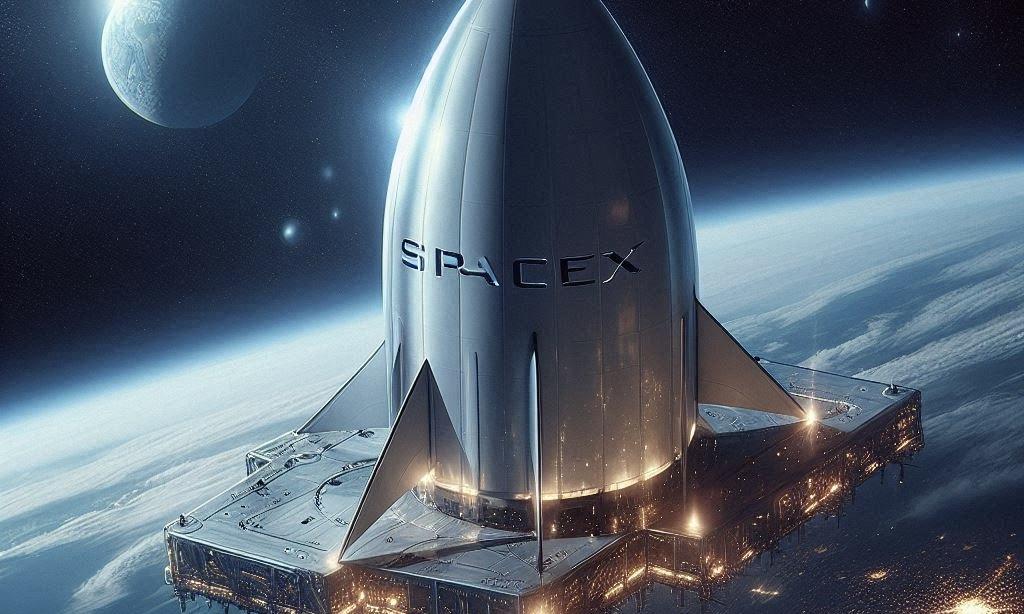SpaceX has reassured the public that the sonic booms from its Starship rocket will not pose a risk to nearby residents. This response follows the FAA's draft assessment of SpaceX's plans to expand Starship launches in Texas.
SpaceX Addresses Public Concerns, Ensures Safety of Starship Sonic Booms Following FAA Review
In a recent Starship update, SpaceX has assured those who may be apprehensive that the sonic blasts from its Starship rocket will not be detrimental to those in the vicinity. The air surrounding SpaceX's rockets is displaced in specific ways during a landing, so they produce sonic explosions. SpaceX has confirmed that the sonic boom generated by the Starship rocket will be louder and more prominent than the Falcon 9 rocket due to its larger size.
SpaceX's most recent announcement is in response to the Federal Aviation Administration (FAA)'s draft assessment of the company's intentions to expand its Starship launches in Texas. It is intended for residents concerned about the potential disruption of their daily lives by loud sounds.
The FAA released its draft environmental assessment for SpaceX's proposal to launch up to 25 Starship orbital launches from its Texas sites within a year earlier today. The FAA requested public input on SpaceX's plans due to the potential alteration in the environmental impact of the launches. The ecological assessment document for SpaceX's Starship Super Heavy booster indicated that it will generate sonic boom "exposures of up to 21 psf for booster landings."
FAA Details Low Risk of Window Damage from Starship Sonic Booms; SpaceX Confirms Safety Measures
The FAA emphasized in the document that the likelihood of large or small windows shattering is low even though smaller sonic booms are less than two pounds per square foot (psf) in magnitude. Nevertheless, the FAA asserts that booms of the same or greater magnitude as those generated by the Super Heavy booster "represent a threshold at which the prevailing literature suggests that window breakage is feasible for standard condition windows." The regulator further specifies that the window breakage is contingent upon "size, age, orientation, surrounding structure, and other factors."
According to Wccftech, SpaceX acknowledges in its release that sonic explosions were present during NASA's Space Shuttle return and are a consistent feature of its Falcon 9 booster landings. It also states that the Super Heavy booster will produce "more powerful booms than those produced by Falcon landings."
Nevertheless, SpaceX is confident that the project will not "pose any risk of injury to those in the surrounding areas" because the "strongest effects will be localized to the area immediately around the Starbase launch pad."
The FAA's document refers to this launch site as the vertical launch area (VLA). SpaceX's most recent goals are to launch 24 daytime Starship missions from the VLA and one nighttime mission. It had previously planned five annual launches, four of which were scheduled for the day and one for the night.
The cascading water system is essential to SpaceX's Super Heavy booster landings. The FAA has stated that the inundation system will be reactivated and operate for approximately 30 seconds during a landing. Conversely, the landing site for a Starship upper-stage landing will not require water cooling.



 Tabletop particle accelerator could transform medicine and materials science
Tabletop particle accelerator could transform medicine and materials science  NASA and SpaceX Target Crew-11 Undocking From ISS Amid Medical Concern
NASA and SpaceX Target Crew-11 Undocking From ISS Amid Medical Concern  Ancient Mars may have had a carbon cycle − a new study suggests the red planet may have once been warmer, wetter and more favorable for life
Ancient Mars may have had a carbon cycle − a new study suggests the red planet may have once been warmer, wetter and more favorable for life  Trump Administration to Launch Autism Initiatives Targeting Acetaminophen Use and New Treatment Options
Trump Administration to Launch Autism Initiatives Targeting Acetaminophen Use and New Treatment Options  Cogent Biosciences Soars 120% on Breakthrough Phase 3 Results for Bezuclastinib in GIST Treatment
Cogent Biosciences Soars 120% on Breakthrough Phase 3 Results for Bezuclastinib in GIST Treatment  xAI Cash Burn Highlights the High Cost of Competing in Generative AI
xAI Cash Burn Highlights the High Cost of Competing in Generative AI  BTIG Initiates Buy on SoftBank as AI and Robotics Strategy Gains Momentum
BTIG Initiates Buy on SoftBank as AI and Robotics Strategy Gains Momentum  China Reviews Meta’s $2 Billion AI Deal With Manus Amid Technology Control Concerns
China Reviews Meta’s $2 Billion AI Deal With Manus Amid Technology Control Concerns  Eli Lilly’s Inluriyo Gains FDA Approval for Advanced Breast Cancer Treatment
Eli Lilly’s Inluriyo Gains FDA Approval for Advanced Breast Cancer Treatment  Is space worth the cost? Accounting experts say its value can’t be found in spreadsheets
Is space worth the cost? Accounting experts say its value can’t be found in spreadsheets  Neuralink Expands Brain Implant Trials with 12 Global Patients
Neuralink Expands Brain Implant Trials with 12 Global Patients  FCC Exempts Select Foreign-Made Drones From U.S. Import Ban Until 2026
FCC Exempts Select Foreign-Made Drones From U.S. Import Ban Until 2026  NASA Astronauts Wilmore and Williams Recover After Boeing Starliner Delay
NASA Astronauts Wilmore and Williams Recover After Boeing Starliner Delay 































